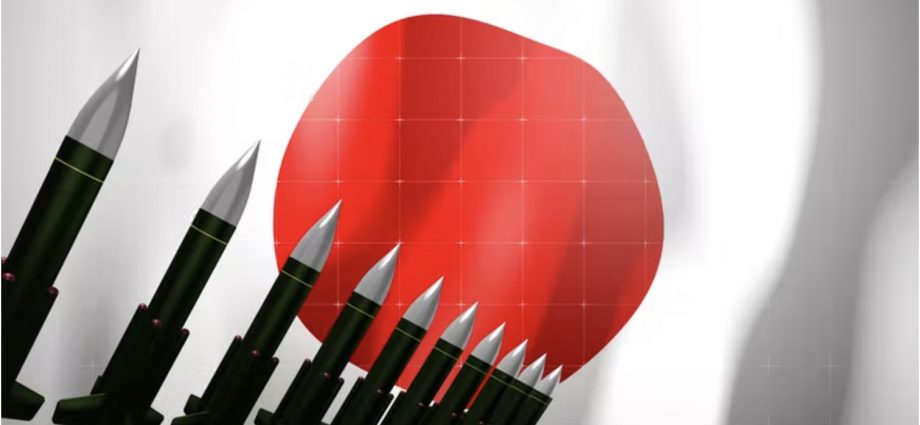TOKYO – Japan is preparing to relax its long-time strict controls on military hardware and technology exports, the latest move in the country’s gathering remilitarization amid rising threats from China.
On February 2, Japanese Defense Minister Yasukazu Hamada said that the nation’s Three Principles on Transfer of Defense Equipment and Technology should be revised to “…deter unilateral attempts to change the status quo by force and to support countries under aggression that violates international law.”
The Three Principles cover (1) prohibition of transfers that violate treaties and agreements (such as the Chemical Weapons Convention), (2) permission for transfers that contribute to peace, international cooperation and national security, and (3) permission for transfers provided any extra-purpose use or transfer to third parties is approved by the government of Japan.
The principles were established under then-prime minister Shinzo Abe in 2014 and replaced an older policy introduced in 1967 that banned exports of military hardware to countries involved or likely to become involved in international conflicts.
Abe shifted the policy from practically useless to useful but strictly controlled. But a lot has changed since then, particularly in the South China Sea and around Taiwan. Widely regarded as radical when it was first proposed, Abe’s approach is now widely seen as having been too strictly controlled.

Since last November, when the ruling Liberal Democratic Party and its coalition partner Komeito began working on the details, the plan has been to maintain the principles but widen their operational guidelines. Specifically, this includes allowing exports of potentially lethal equipment if the shipments would ultimately contribute to Japan’s national security.
Defense Minister Hamada has also noted that relaxing the operational guidelines would help strengthen Japan’s defense industry.
It would do so by expanding the addressable market and economies of scale, and allowing Japanese contractors to meet the varied requirements of overseas customers. Domestic materials, parts and service providers would also benefit.
In its latest National Defense Strategy, Japan’s Ministry of Defense wrote:
Transfer of defense equipment and technology overseas is a key policy instrument to ensure peace and stability, especially in the Indo-Pacific region… From this perspective, the Three Principles on Transfer of Defense Equipment and Technology, its Implementation Guidelines, and other systems are to be considered for revisions in order to promote smooth transfer of defense equipment and technology of high security significance and international joint development in a broad array of fields.
In doing so, the necessity, requirements, and transparency of the related procedures for transfer of defense equipment and technology will be under adequate consideration, while maintaining the three principles themselves.
In addition, Japan will carry forward with the transfer of defense equipment and technology in the joint public and private efforts by establishing a fund, and implementing measures including providing corporate assistance as necessary to smoothly promote such transfers.
The “fund” and “assistance” are part of a comprehensive effort to strengthen the finances of Japan’s defense industry.
On February 10, the Cabinet decided on new legislation to support the defense industry and forwarded it to the Diet for deliberation.
If and when it is passed, widely seen as a foregone conclusion, government subsidies will be made available to defense contractors to defray the cost of modifying equipment to meet the specifications of foreign buyers.
The government will also help finance improvements to defense industry supply chains, manufacturing processes and cyber security while at the same time facilitating industry consolidation.
If cases arise in which production could be lost despite this assistance, the company or facilities in question could be temporarily nationalized, according to the draft legislation.
Such public-private cooperation is not entirely new. In December 2020, the Ministry of Defense and Keidanren (Japan Business Federation) announced an agreement under which the ministry would work with manufacturing and trading companies to identify and exploit defense-related business opportunities with foreign governments.
At the time, then-defense minister Nobuo Kishi said that it would be impossible for Japan to strengthen its defense capabilities without working with Keidanren.
Before that, in March 2020, Mitsubishi Electric was awarded a contract to supply fixed and mobile radar to the Philippines. It was the first export of complete defense equipment systems approved under the guidelines established in 2014. Shipment of the radar systems and training of Philippine Air Force personnel in their use began in October 2022.
In September 2021, the governments of Japan and Vietnam signed an agreement covering the export of Japanese military equipment and technology to Vietnam.
Earlier, in August 2020, Japan had agreed to provide Vietnam with a 40-year loan of up to $350 million at 0.1% interest to finance the purchase of six patrol boats to be built in Japan for the Vietnamese Coast Guard.
In February 2020, Mitsubishi Heavy Industries (MHI) won a $133 million contract to build two Multi-Role Response Vessels for the Philippine Coast Guard. Before that, starting in 2014, MHI exported defense system components.

These were all small initial steps resulting from an evolution in policy that could eventually lead to Japan playing a major role in collective defense and the global arms trade commensurate with its economic and technological power.
In December 2022, it was announced that Japan, the UK and Italy plan to jointly develop a next-generation fighter jet for deployment in the mid-2030s.
Japanese media reports said that as soon as enabling legislation is passed, the government plans to allow exports of more sophisticated defense equipment and technology to Southeast Asia, Europe and the other three members of the Quad – Australia, India and the US.
Follow this writer on Twitter: @ScottFo83517667

